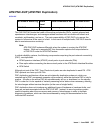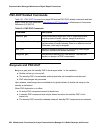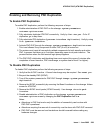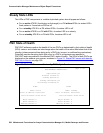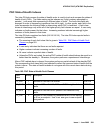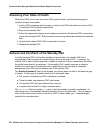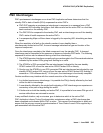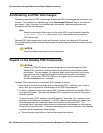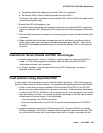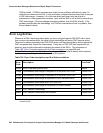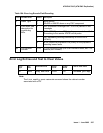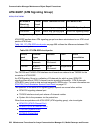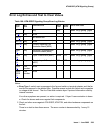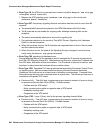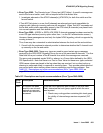
Communication Manager Maintenance-Object Repair Procedures
594 Maintenance Procedures for Avaya Communication Manager 3.0, Media Gateways and Servers
Antithrashing and PNC Interchanges
Following a spontaneous PNC interchange, subsequent PNC interchanges are prevented for 5
minutes. This condition is indicated by y in the Interchange Disabled? field of the status
pnc screen. After 5 minutes, the antithrashing timer expires, interchange decisions are
re-enabled, and the field displays n.
Note:
Note: Should a catastrophic failure occur on the active PNC during the period when the
Interchange Disabled? field is set to “yes,” there will be no spontaneous
PNC interchange.
Demand PNC interchanges also invoke anti-thrashing, but only for a period of 30 seconds.
During antithrashing mode, demand interchanges are also prevented unless the override option
is specified.
!
CAUTION:
CAUTION: Use of this option may cause a service disruption.
Repairs on the Standby PNC Components
!
CAUTION:
CAUTION: If there is a TDM-CLK alarm, system timing may be routed through part of the
standby PNC, and circuit switched data may be affected by the following repair
procedures. This can happen, for example, when a slave tone/clock circuit pack
experiences a loss of signal and switches to receive timing from the standby
ATM-EI. In this case TDM-CLK 2305 error is logged, and the clock problem
should be addressed first, if possible.
To repair PNC components in a duplicated PNC proceed as follows:
1. Most repairs involve fixing a single fault on the standby PNC. Use set pnc lock or
busy-out pnc to prevent an interchange into the PNC being repaired.
2. If a faulty component exists on the active PNC, this also means that the standby PNC is
more severely faulted. Normally, the standby PNC is repaired first, since it is the most
severely impaired.
To repair the active PNC (standby is already repaired), enter set pnc unlock, which
generates a spontaneous interchange. In a PNC demand interchange with reset pnc
interchange use the override-and-lock qualifier for the active PNC. The
override-and-lock option ensures that no subsequent interchange can occur during
the repair of the standby PNC. A demand interchange may not be necessary if the following
conditions drive a spontaneous interchange:
● The anti-thrashing period from the last interchange has expired.




